UPSC Daily Current Affairs: 16 July 2024 | Current Affairs & Hindu Analysis: Daily, Weekly & Monthly PDF Download
GS2/Polity
SC to look into the use of ‘Money Bills’ to pass laws
Source: The Hindu

Why in news?
CJI D.Y. Chandrachud has accepted the plea to list petitions challenging the passage of contentious legislation in Parliament.
- This has given rise to the expectation that the matter could be heard and decided before Chandrachud demits office in November this year.
Presently, the three key issues are referred to the 7-judge bench in the Supreme Court:
- Amendments made post-2015, like the Prevention of Money Laundering Act (PMLA) through Money Bills, giving the Enforcement Directorate wide powers, were valid or not.
- Whether the passage of the Finance Act of 2017 as a Money Bill to alter appointments to 19 key judicial tribunals was valid or not.
- In the Aadhaar case, the Supreme Court had in 2018 upheld the Aadhaar Act as a valid Money Bill. However, in 2021, Justice D.Y. Chandrachud (who was then a part of the bench) had dissented, saying the larger questions on Money Bills should be decided first before reviewing the Aadhaar judgment.
- Now, the current Chief Justice D.Y. Chandrachud has agreed to list the petitions challenging the use of the Money Bill route by the Centre to pass contentious amendments, indicating he will constitute a 7-judge Constitution Bench to hear this matter.
A Money Bill is a specific type of financial legislation that exclusively deals with matters related to taxes, government revenues, or expenditures. It is defined under Article 110 of the Indian Constitution.
Every Money Bill is a Finance Bill but every Financial Bill is not a Money Bill:
- A Financial Bill can cover a broader range of financial issues, whereas a Money Bill is specifically limited to the matters mentioned in Article 110 of the Constitution. Therefore, while every Money Bill is a Financial Bill, not every Financial Bill is a Money Bill.
Key provisions of the Money Bill:
- Article 110(1)(a): Imposition, abolition, remission, alteration, or regulation of any tax
- Article 110(1)(b): The regulation of borrowing by the government or giving of any guarantee by the government or the amendment of the law for any financial obligations undertaken by the government
- Article 110(1)(c): Custody of the Consolidated Fund Contingency Fund of India, the payment of money into or the withdrawal of money from any such Fund.
- Article 110(1)(d): Appropriation of money out of the Consolidated Fund of India
- Article 110(1)(e): Declaration of any expenditure to be expenditure charged on the Consolidated Fund of India or the increase of the amount of any such expenditure
- Article 110(1)(f): Receipt of money on account of the Consolidated Fund of India or the public account of India or the custody or issue of such money or the audit of the accounts of the Union or of a State
- Article 110(1)(g): Any matter incidental to any of the matters specified in sub-clauses (a) to (f).
What are the present challenges associated with the Parliament?
- Circumvention of the Rajya Sabha: The government is accused of misusing the Money Bill provision to evade scrutiny of the Bill by the Rajya Sabha where it was numerically weaker as compared to the Lok Sabha where it enjoyed pre-eminence.
- Contentious Amendments passed as the Money Bill: Aadhaar Act, 2016; amendments to the Prevention of Money Laundering Act, 2002; amendments to the Foreign Contributions Regulations Act, 2010; Finance Act, 2017 which brought about changes in the mode of appointment of judicial tribunals; electoral bonds scheme brought through Finance Act, 2017.
- The Finality of the Speaker's Decision: The Lok Sabha Speaker's decision to certify a bill as a Money Bill has been contested. The judiciary has debated whether this decision is final or subject to judicial review.
Way forward:
- Need for strengthening Judicial Oversight: Establish clear guidelines and criteria for the classification of bills as Money Bills, ensuring they strictly adhere to the provisions outlined in.
- Requires the Reinforcement of Legislative Procedures: Enhance the role of the Rajya Sabha in the legislative process by ensuring that all significant amendments, especially those affecting governance structures or individual rights, undergo thorough scrutiny in both houses of Parliament.
Mains PYQ:
The Indian Constitution has provisions for holding joint sessions of the two houses of the Parliament. Enumerate the occasions when this would normally happen and also the occasions when it cannot, with reasons thereof. (UPSC IAS/2017)
GS-III/Economics
Uniform IGST Rate of 5% on Aircraft and Aircraft Engine Parts
Source: Deccan Chronicle
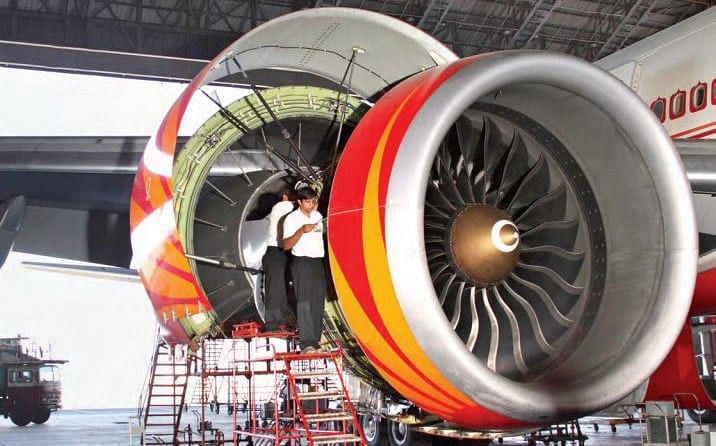
Why in news?
The government has implemented a uniform Integrated Goods and Services Tax (IGST) rate of 5% on all aircraft and aircraft engine parts.
IGST Harmonization for MRO Boost
- This move aims to enhance Maintenance, Repair, and Overhaul (MRO) activities in India.
- Previously, GST rates on aircraft components varied, causing operational challenges.
- The Indian MRO industry is expected to reach a value of $4 billion by 2030.
- Currently, India holds only a 1% share of the global MRO market, which is valued at $45 billion.
- The industry includes airframe maintenance, engine maintenance, components maintenance, and line maintenance.
What is Integrated Goods and Services Tax (IGST)?
IGST is an integral part of India's GST system. It is levied by the central government on various transactions such as inter-state supply of goods and services, imports, and supplies to SEZ units.
- IGST is calculated by combining Central GST (CGST) and State GST (SGST) rates.
- One notable aspect is that the importing state receives the tax benefits.
Rationale for the Uniform 5% IGST Rate
- Simplification of Tax Structure: A consistent 5% IGST rate streamlines tax compliance and eliminates complexities in classification.
- Cost Efficiency: A lower IGST rate reduces the overall tax burden on the aviation industry, making aircraft acquisition and maintenance more affordable.
- Global Alignment: Aligning with global standards enhances India's competitiveness and attractiveness for international aviation investments.
- Promotion of Aviation Services: The uniform rate encourages aircraft leasing and MRO activities, supporting India's ambition to become a hub for these services.
GS2/International Relations
China’s Communist Party begins ‘Third Plenum’ with focus on slowing economy
Source: Indian Express
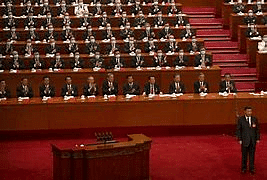
Why in news?
China’s Communist Party commenced and formulated a strategy for achieving self-reliant economic growth amidst heightened National security concerns and restrictions on American technology access.
What are the plenums of the Chinese Communist Party?
The Chinese Communist Party holds a major congress twice a decade, where members of the Central Committee are elected. In between the party congresses, the Central Committee holds seven plenums attended by all its current members.
- 1st, 2nd, and 7th plenums typically focus on power transitions between Central Committees.
- 4th and 6th plenums generally center on party ideology.
- 3rd plenums have historically focused on long-term economic reforms.
- 5th plenums are associated with deliberations for the country's five-year development plans.
What are the major decisions taken at these meetings?
- Chinese government is planning to take measures to restore and expand domestic consumption, focusing on sectors like automobiles, real estate, and services.
- Reforms are also planned to transform the mechanisms of economic development by making the domestic market and technological innovation the main drivers of growth and emphasis on advancing the “New Development Pattern” adopted in the 14th Five-Year Plan (2021-2025).
- Provisions that provided relaxation of restrictions on home purchases and funding curbs on property developers in some cities are incorporated to boost the struggling real estate market.
- Focus on advancing science and technology sectors like Artificial Intelligence, Green Energy, Electric Vehicles under the “New Quality productive Forces” initiative.
What are the expected implications shortly for regional trade and politics?
Trade and Economic Relations:
- Policies discussed at plenums can impact China’s trade strategies on economic reforms, market regulations, and industrial policies could influence trade volumes, tariffs, and investment flows.
- Changes in China’s economic policies could include shifts in investment patterns, and infrastructure projects linked to China’s Belt and Road Initiative.
Security Dynamics:
- Discussions on National security policies and Military strategies can impact regional security dynamics, especially India’s Arunachal Pradesh region influencing alliances, defense postures, and regional stability.
Conclusion:
The Indian Government needs to watch its 'Neighbourhood First' Policy very effectively keeping its stance assertive rather than passive this time.
Mains PYQ:
“China is using its economic relations and positive trade surplus as tools to develop potential military power status in Asia”, In the light of this statement, discuss its impact on India as her neighbor. (UPSC IAS/2017)
GS-III/Science and Technology
100 years of Electroencephalography (EEG)
Source: The Hindu

Why in news?
This year marks the 100th anniversary of the first human electroencephalography (EEG) by German physiologist Hans Berger.
Historical Development of EEG
- Richard Caton in 1875 first noticed electrical signals in the brains of animals.
- Adolf Beck and later Vladimir Pravdich-Neminsky expanded on this work. In 1924, the first EEG of a human brain was recorded.
What is EEG?
- EEG stands for electroencephalography, where "electro" refers to electricity, "encephalo" to the brain, and "graphy" to recording.
- It tracks the brain's electrical activity generated when neurons move charged particles, aiding in diagnosing conditions like epilepsy and monitoring brain function.
Understanding Volume Conduction
- Volume conduction elucidates how brain signals traverse different layers to reach scalp electrodes.
- Electrodes detect these signals, but noise from layers must be filtered for accurate readings.
How does an EEG Test Work?
- Neurons' ion movements create electrical waves detected by electrodes on the head.
- An EEG records and measures these waves, requiring gel application and accurate electrode placement.
What EEG Can and Can't Show
- Strengths: EEG is adept at capturing rapid brain activity changes, aiding in immediate assessments.
- Limitations: It primarily detects surface signals and struggles with pinpointing activity origins.
- EEG is cost-effective, portable, and safe compared to other diagnostic methods like MRI.
GS3/Science and Technology
ISRO has a problem: many rockets, but too few satellites to launch
Source: The Hindu

Why in news?
After the ambitious Next Generation Launch Vehicle (NGLV) was finalized in June 2024, ISRO Chairman S. Somanath stated its launch capability exceeded demand threefold, highlighting a need for robust domestic market demand for launch vehicles.
What is the present scenario of Satellites in India?
India operates a diverse fleet of satellites with applications in Communications, Remote Sensing, Positioning, Navigation and Timing (PNT), Meteorology, Disaster Management, Space-based internet, Scientific missions, and Experimental missions.
India currently has four main launch vehicles:
- Small Satellite Launch Vehicle (SSLV)
- Polar Satellite Launch Vehicle (PSLV)
- Geosynchronous Satellite Launch Vehicle (GSLV)
- Launch Vehicle Mark-III (LVM-3), capable of launching satellites up to four tonnes to geosynchronous orbit.
Before (Supply-Driven Model)
- The Indian Space Research Organisation (ISRO) primarily built and launched satellites based on its assessments and planned missions without waiting for specific customer demands.
- After launching satellites, ISRO would then look for customers who needed the services provided by the satellites, which sometimes led to underutilization or delayed utilization of satellite capabilities.
- The space sector was heavily government-controlled, with limited involvement and investment from private players.
- There was less emphasis on educating potential customers about the benefits and applications of space-based services, leading to lower demand from various sectors.
After 2020 (Demand-Driven Model
- The Space sector reforms 2019-2020 encouraged greater private sector participation, fostering innovation, competition, and commercialization in the Indian space industry.
- Satellites are now built and launched based on confirmed customer demands, ensuring that each satellite has a predefined purpose and user base before it is sent into space.
- The market demand for satellite services is validated and secured before the construction and launch phases, leading to better alignment of resources and higher utilization rates.
Major Three Limitations Associated at Present Time:
Limited Launch Vehicle Capability:
- Currently, the Indian launch vehicles have restricted payload capacities, necessitating multiple launches for larger missions, increasing costs and complexity.
Demand-Supply Mismatch:
- Transitioning from a supply-driven to a demand-driven model faces challenges, including the need to educate potential customers and create a robust private sector ecosystem.
Economic and Technological Constraints:
- High costs of developing and maintaining launch vehicles and satellites, coupled with the early stages of implementing cost-effective reusable technologies, and insufficient infrastructure and investment.
Way forward:
Enhance Launch Vehicle Capacity:
- Invest in research and development to upgrade existing launch vehicles like GSLV and LVM-3 to increase payload capacity, reducing dependence on foreign launch providers.
Strengthen Market Engagement and Education:
- Expand outreach programs to educate potential customers across sectors about the benefits and applications of satellite-based services.
Promote Private Sector Participation:
- Facilitate a conducive regulatory environment to attract private investments and foster innovation in satellite manufacturing and launch services.
Mains PYQ:
India has achieved remarkable successes in unmanned space missions including the Chandrayaan and Mars Orbiter Mission, but has not ventured into manned space missions. What are the main obstacles to launching a manned space mission, both in terms of technology and logistics? Examine critically.
GS3/Defence & Security
Appointment of the new Additional National Security Advisor (ANSA)
Source: The Hindu
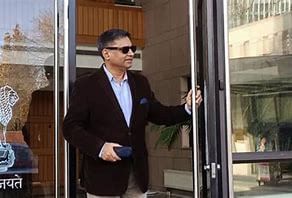
Why in news?
A new Additional National Security Advisor (ANSA) was appointed on July 1, 2024, marking the first time this position has been filled. The ANSA will assist the National Security Advisor (NSA) in managing the country’s national security affairs.
Recent Controversies about the NSA’s Role
Recent controversies involving R&AW and the Agniveer initiative have brought the NSA’s role back into focus. Questions remain about the ideal background for the NSA and the prioritization of experience in internal versus external security.
National Security Advisor (NSA):
The NSA is the senior official on the National Security Council of India. The post was created on 19 November 1998 by the Government of Atal Bihari Vajpayee. He/She is also the chief adviser to the Prime Minister of India on national security policy and international affairs.
- Ajit Doval is the current NSA, and has the same rank as a Union Cabinet Minister.
- Receives all intelligence (RAW, IB, NTRO, MI, DIA, NIA) reports and co-ordinates them to present before the Prime Minister.
- Serves at the discretion of the Prime Minister of India.
About the National Security Council of India:
NSC is an executive government agency tasked with advising the Prime Minister’s Office on matters of national security and strategic interest.
- 3 tier structure of the NSC comprises: Strategic Policy Group (SPG), National Security Advisory Board (NSAB) and National Security Council Secretariat.
- All aspects of national security are deliberated upon by the National Security Council (NSC), the apex body.
- Members: Ministers of Home Affairs, Defence, External Affairs, Finance and Deputy Chairman of the NITI Aayog. Secretary is its Secretary.
Changes in the National Security Architecture
- Previous Structure: The position was consistently vacant. New Structure: New ANSA appointed for the first time. NSA had a more operational role. NSA’s role is now more advisory, focusing on strategic policy and advisory outfits.
- Reporting Structure: CDS, service chiefs, and Union secretaries reported to NSA and their respective ministers. CDS, service chiefs, and Union secretaries continue to report to NSA and their ministers; however, ANSA now acts as a gatekeeper.
- Size of NSA’s Organization: Smaller organization with no ANSA. Larger organization with an ANSA and three deputy NSAs.
- Daily Security Briefings: Directly by NSA. Unclear if briefings will be by NSA, ANSA, or both.
- Communication Chain: Direct communication between mid-level unit heads and NSA. ANSA acts as an intermediary between mid-level unit heads and NSA, adding a bureaucratic layer.
- Ministerial Reporting: NSA interacted with Union ministers and Prime Minister. Ministerial bosses also interact directly with respective secretaries, causing potential turf issues.
Speculations and Future Roles
- Speculations about the continuity and succession of the current NSA.
- Ongoing speculations about the future role and potential succession by the newly appointed ANSA.
Internal Security Management
- NSA handled internal security along with other duties. ANSA now specifically responsible for internal security management and threat analysis.
Overall Security Strategy
- NSA managed both strategic advisory and operational aspects. Separation of strategic advisory role (NSA) and operational internal security role (ANSA).
Issues with the re-structuring:
- Bureaucratic Layering: The introduction of the ANSA adds an additional bureaucratic layer, potentially slowing down decision-making.
- Turf Issues: Potential conflicts between the NSA and the Principal Secretary to the Prime Minister, especially regarding convening meetings.
- Lack of clarity in Roles: Uncertainty about whether the NSA or ANSA will conduct daily security briefings, leading to possible communication confusion.
- Ministerial Reporting Dynamics: Challenges for ministers in managing secretaries’ dual reporting lines to both the NSA and their respective ministers.
- Operational Efficiency: The NSA’s shift to a more advisory role might affect the operational efficiency in handling immediate security threats.
Future of the NSA
- There is speculation about the future of the incumbent NSA, Ajit Doval, and whether his elevation is a precursor to retirement.
- Questions arise about whether ANSA Rajinder Khanna will succeed Doval or if an outsider will be appointed.
PYQ:
[2021] Analyse the multidimensional challenges posed by external state and non-state actors, to the internal security of India. Also discuss measures required to be taken to combat these threats.
GS3/Defence & Security
What is Maharashtra’s new bill to combat Naxalism in urban areas?
Source: India TV News

Why in News?
The Maharashtra state government has introduced the Maharashtra Special Public Security (MSPC) Bill, 2024, to address the growing incidence of Naxalism in urban areas.
Key Provisions drafted under the MPSC Bill, 2024
Declaration of Unlawful Organisation:
The bill empowers the government to declare any suspect organization as an unlawful organization, targeting entities supporting or associated with Naxal activities in urban areas.
Offenses and Penalties:
It outlines four primary offenses - membership in an unlawful organization, fundraising for such organizations, managing or assisting them, and engaging in unlawful activities. Penalties range from two to seven years of imprisonment and fines up to Rs 5 lakh.
Cognizable and Non-Bailable Offenses:
Offenses under the bill are cognizable, allowing arrest without a warrant, and non-bailable, which means individuals accused can be detained pending trial.
Lower Threshold for Unlawful Activity:
Unlike the UAPA, the bill sets a broader and less defined threshold for what constitutes “unlawful activity,” including acts perceived to threaten public order, disrupt law enforcement, or incite disobedience to law.
Speedy Prosecution:
The bill streamlines the prosecution process by allowing district magistrates or police commissioners to grant permissions, circumventing the need for central or state government sanctions as required under UAPA.
Why it is being seen as a threat to civil liberty:
Broad Definitions:
Critics argue that the bill’s definitions of unlawful activities are overly broad and vague, potentially encompassing legitimate acts of dissent, protest, or advocacy that are essential in a democratic society.
Lack of Judicial Oversight:
Unlike the UAPA, which involves a judicial process for designating an organization as unlawful, the MSPC Bill places this authority with an advisory board. This shift reduces judicial oversight and increases executive control over legal proceedings.
Impact on Freedom of Expression:
By criminalizing acts such as generating fear in the public or encouraging disobedience to law without clear definitions, the bill could curtail freedom of expression and assembly, essential rights in a democratic society.
Preventive Detention:
The provision for non-bailable offenses and cognizable offenses without warrants increases the risk of preventive detention, potentially leading to arbitrary arrests and prolonged detention without due process.
Constitutional Concerns:
Critics argue that the bill violates constitutional protections of freedom of speech, assembly, and association by stifling dissent and legitimate protest under the guise of national security.
Way forward:
Consultative Process:
The Maharashtra government should engage in a consultative process with legal experts, civil society organizations, and stakeholders to refine the bill’s provisions, ensuring they align with constitutional principles and international human rights standards.
Safeguarding Rights:
Introduce safeguards such as judicial oversight in the process of declaring organizations unlawful, ensuring that fundamental rights like freedom of expression and assembly are protected while addressing legitimate security concerns effectively.
Mains PYQ:
Naxalism is a social, economic, and developmental issue manifesting as a violent internal security threat. In this context, discuss the emerging issues and suggest a multilayered strategy to tackle the menace of Naxalism (2022).
GS3/Economy
Need for a stronger aviation ecosystem
Source: The Hindu
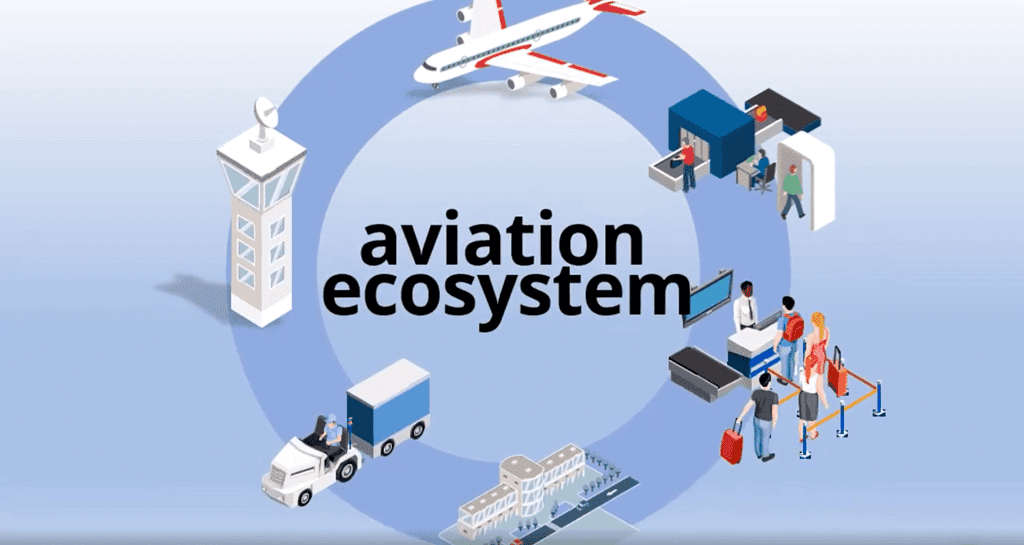
Why in news?
The privatisation of Air India in 2022, transferring ownership from the government to Tata Sons, marked a significant milestone and a bold reform since the second wave of liberalisation in 2004. This strategic transformation is anticipated to stabilize the airline sector and positively impact the entire value chain, potentially extending benefits beyond India's borders.
Fleet expansion
- Since 2022, significant developments in India's airline sector include Air India's order for a record 470 aircraft and IndiGo's rapid growth with a fleet of about 370 aircraft and more than 980 on order.
- This could double the country's fleet of nearly 700 aircraft by 2030.
- It took the Indian industry about 90 years from the time of the first commercial flight to reach a fleet size of 700 aircraft.
- But the rate of growth is so strong that carriers could add a further 600-700 aircraft in just the next 5-7 years.
Robust airline system and growth in traffic
Air India's $6.5 billion investment and IndiGo's record $1 billion profitability in FY2024 indicate a robust airline system. Despite supply-chain challenges, domestic and international traffic grew by 13% and 22%, respectively, in FY2024.
Efforts to enhance airport infrastructure
- To support this expansion, India is enhancing airport infrastructure with a $11 billion investment pipeline.
- In the National Capital Region, Delhi International Airport will expand capacity to 130-140 million passengers annually, complemented by the new Noida International Airport opening in April 2025 with a 70 million capacity.
- The Mumbai Metropolitan Region will also have a dual airport system, handling 145 million passengers annually.
- The Adani Group is expanding capacity at six non-metro airports, and the Airports Authority of India is investing $4 billion to enhance non-metro capacity.
- Greenfield airports are also planned for Chennai and Pune.
National Civil Aviation Policy (NCAP) 2016
- Guides the Indian aviation sector. Aviation policy is broad-based in India and is dealt with by the Ministry of Civil Aviation under the legal framework of the Aircraft Act 1934, and Aircraft Rules 1937.
- The DGCA is the statutory regulatory authority which comes in for issues related to safety, licensing, airworthiness, and so on.
- Airports Authority of India (AAI) manages and operates airports and provides air traffic management services.
- Bureau of Civil Aviation Security (BCAS) is responsible for laying down standards and measures for the security of civil flights and airports.
- Airport Economic Regulatory Authority (AERA) regulates tariffs and other charges for aeronautical services provided at major airports. It also monitors performance standards of such services.
Regional Connectivity Scheme (RCS) - UDAN (Ude Desh ka Aam Naagrik)
- Aims to make air travel affordable and widespread by enhancing regional air connectivity through financial incentives, subsidies, and infrastructural support.
- Provide incentives for investment in skilling, training, and education.
- The rapid growth of India's aviation industry could lead to skill shortages, particularly among technical staff like pilots, maintenance engineers, and technicians.
- The new DGCA duty and rest norms for pilots could increase pilot demand by 15%.
- There are also shortages in air-traffic controllers and security personnel.
- Thus, the Budget should provide incentives for investment in skilling, training, and education.
Restructuring of institutions
Restructuring the Directorate General of Civil Aviation and the Bureau of Civil Aviation Security is necessary to address challenges from technological disruptions and environmental issues. Corporatising air traffic control by hiving off Air Navigation Services from AAI could improve capital access for system investments.
Rationalisation of taxes
The Budget should consider rationalising taxes, which currently account for nearly 20% of an airline's quarterly revenue, including state levies on aviation turbine fuel.
GS3/Economy
ICAR to Launch ‘One Scientist, One Product’ Scheme
Source: The Hindu

Why in News?
The Indian Council of Agricultural Research (ICAR) is set to introduce the ‘One Scientist-One Product’ program on July 16 to enhance research in the fields of agriculture and animal husbandry.
About ICAR (Objective, Functions, etc.)
Indian Council of Agricultural Research (ICAR)
- Established in 1929 as a registered society under the Societies Registration Act, 1860.
- An autonomous organization under the Department of Agricultural Research and Education (DARE), Ministry of Agriculture and Farmers Welfare.
- The apex body for coordinating, guiding, and managing research and education in agriculture, horticulture, fisheries, and animal sciences nationwide.
Functions of ICAR
- Agricultural Research and Development:
- Conducts and promotes research in various agricultural fields such as crop science, animal science, horticulture, fisheries, and agricultural engineering.
- Develops innovative technologies to enhance agricultural productivity and sustainability.
- Education and Training:
- Oversees agricultural education standards through a network of universities and colleges.
- Provides training programs for farmers, extension workers, and scientists.
- Policy Support and Advisory Role:
- Advises the government on agricultural policies and strategies.
- Supports the formulation of national agricultural policies.
- Extension Services:
- Implements extension programs to transfer technology to farmers.
- Works closely with state agricultural universities and other agencies to provide assistance to farmers.
- Resource Management:
- Focuses on the sustainable management of natural resources like soil, water, and biodiversity.
- Promotes practices that enhance resource-use efficiency and environmental sustainability.
ICAR to Launch ‘One Scientist, One Product’ Scheme
The ICAR is gearing up to unveil the "One Scientist-One Product" initiative to boost research in agriculture and animal husbandry. The launch will coincide with the release of 323 varieties of 56 crops, including climate-resilient and bio-fortified types, during an event in Delhi on ICAR's 96th foundation day.
About One Scientist One Product Program
- Each of ICAR's 5,521 scientists will be assigned a project annually, focusing on product development, technology, models, or publications.
- Scientists will select their projects at the beginning of each year, with progress monitored regularly.
- The program is slated to run for five years initially, with emphasis on high-yielding oilseeds and pulses.
ICAR’s Aim to Develop High-yielding Seeds
- ICAR aims to create 100 new seed varieties and farm technologies within a 100-day timeframe under the government's action plan.
- The organization plans to have Prime Minister Modi launch these programs by mid-September.
- ICAR has already made significant strides in cultivating bio-fortified crops across millions of hectares, enhancing production even during challenging times.
GS2/Polity
Humanising Citizenship Law in India
Source: Indian Express
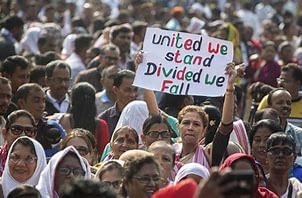
Why in news?
The Supreme Court declared an Assam resident (Md Rahim Ali) a citizen of India, overturning the decision of a Foreigners’ Tribunal (FT) in the state. Because of minor discrepancies in spellings and dates in the documents produced by him, the FT declared him a foreigner, holding that he had entered India illegally on or after the cut-off date of March 25, 1971.
Foreigners’ Tribunals
- Quasi-judicial bodies
- Established as per the Foreigners’ Act 1946 and the Foreigners’ Tribunal Order 1964
- Post-independence, the Foreigners’ Tribunals were established by an executive order of the Home Ministry
Assam’s Foreigners’ Tribunals Issues
- About 3 lakh people in Assam were declared Doubtful Voters in 1997 without any inquiry or notice
- Notices issued by FTs generally do not mention any ground as mandated
- As of March 2019, 1.17 lakh people had been declared foreigners without knowing the charges
SC Verdict Impact
- SC judgment could positively impact cases pending with the FTs
- Clarification on burden of proof for accused under the Foreigners Act
- Minor discrepancies in documents should not result in loss of citizenship
Citizenship (Amendment) Act (CAA) 2019
- Amends the definition of illegal immigrant for specific religious groups
- Provides fast track Indian citizenship for certain immigrants
- Eligibility criteria based on persecution on the ground of religion
National Register of Citizens (NRC)
- Official record of legal Indian citizens
- Updated for Assam to identify illegal immigrants
- Process started in 2015, final NRC released on August 31, 2019
|
44 videos|5271 docs|1113 tests
|
















